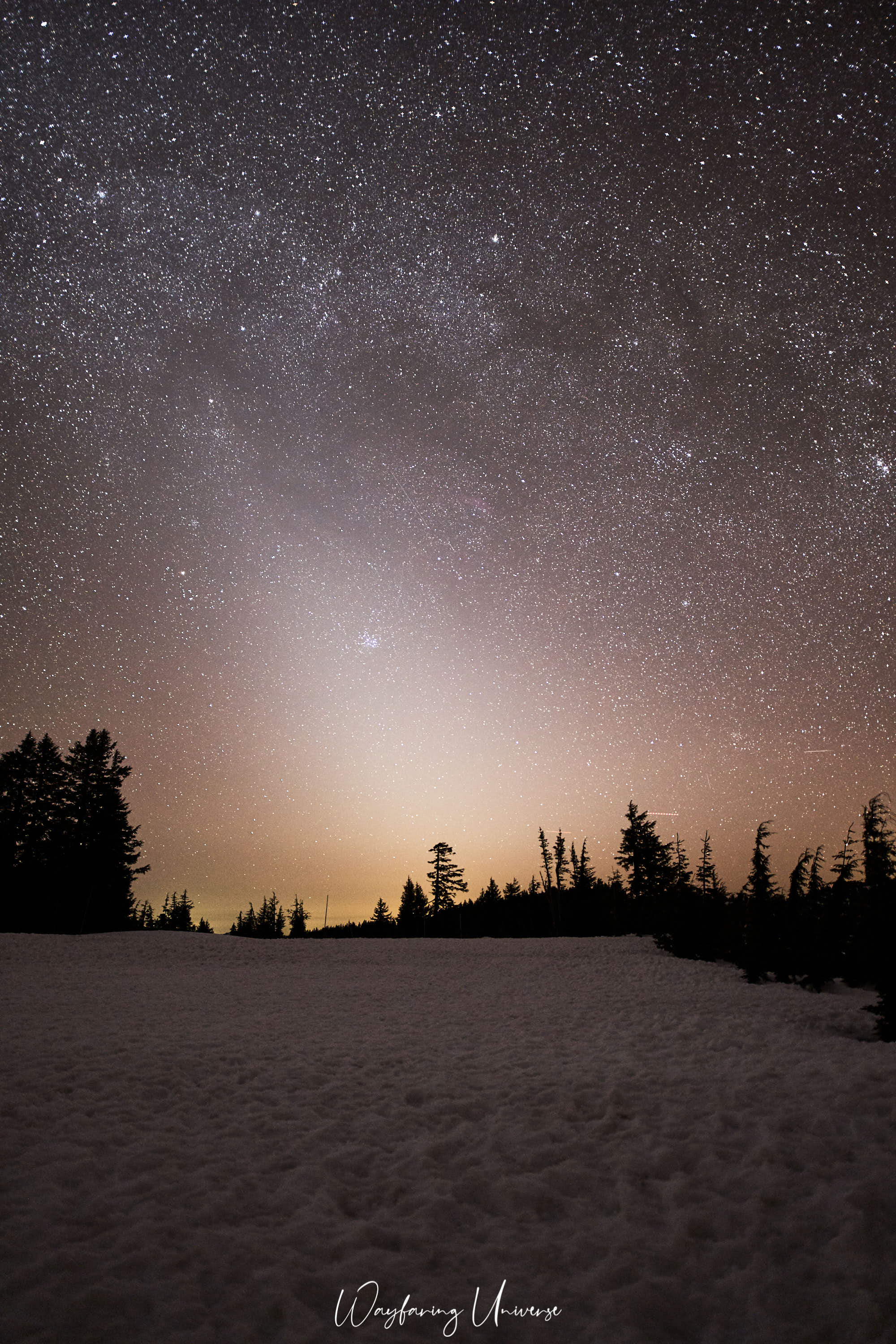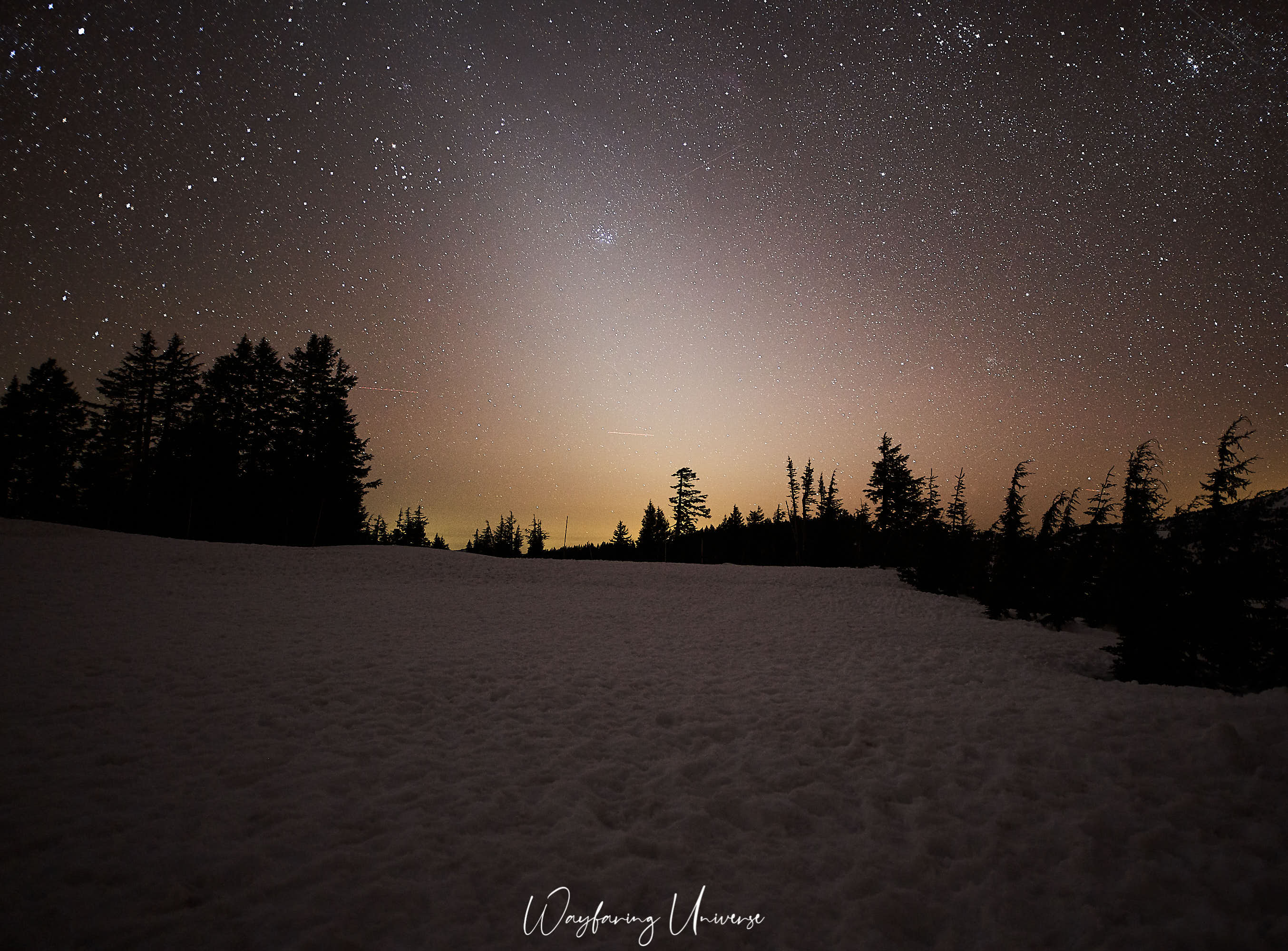Zodiacal Light or False Dawn
April, 2021
Zodiacal Light, often referred to as the ‘False Dawn or Dusk,’ is a captivating celestial phenomenon characterized by a soft, ethereal radiance that graces the eastern or western horizon just before sunrise and after sunset. This elusive spectacle, sometimes mistaken for the first light of day or the last vestiges of twilight, has captured the imagination of stargazers and astronomers for centuries.

Think of it like this: there are tiny specks of dust and debris floating around in space, and they’re all around the Sun. Some of these specks come from comets, asteroids, and other things that have flown through space.
Now, when sunlight hits these tiny specks of dust, something cool happens. The light gets scattered and bent by these specks, kind of like how a prism makes a rainbow. This bending and scattering of sunlight make the specks of dust light up a little bit.
So, when you look at the sky just before sunrise or after sunset, you see this faint, beautiful glow. It’s like a soft bridge of light that goes up from the horizon towards the sky. It’s not very bright, but it’s really captivating.
Observing Zodiacal Light in all its subtlety requires ideal conditions: a clear, dark sky, free from light pollution, and a location far from urban glare. Zodiacal Light is the brightest around equinoxes. In the Northern hemisphere, the best way to see it in springtime is to look for it in the western sky after sunset. And in autumn, just before dawn in the eastern sky. Find a dark spot and observe on a moonless night. It’s a magical connection between the daytime and nighttime worlds.
This one is from early April 2021.
